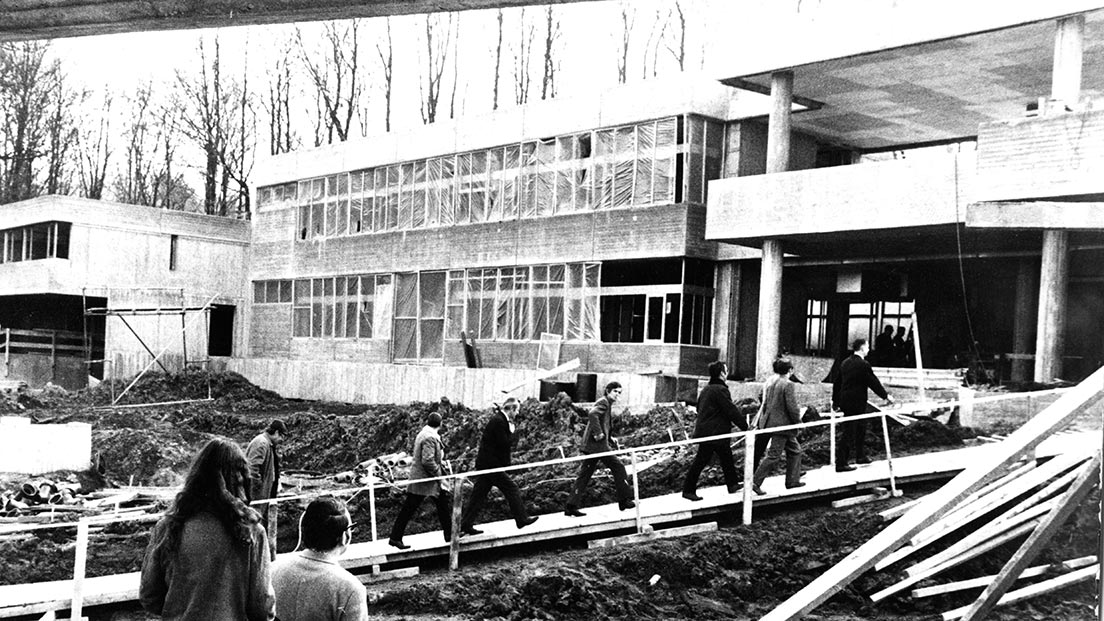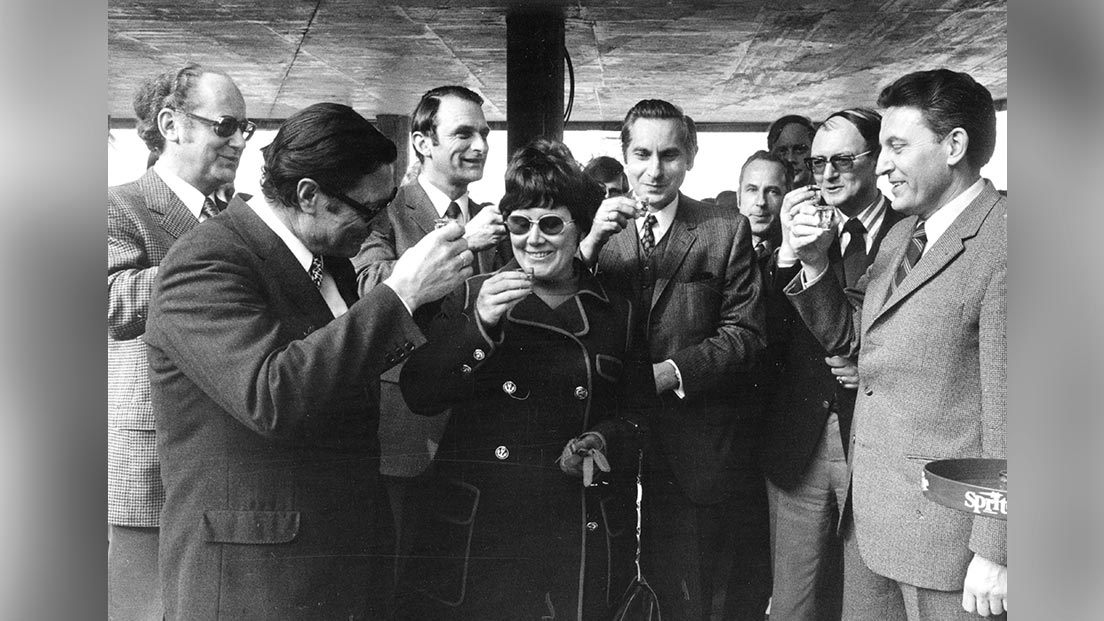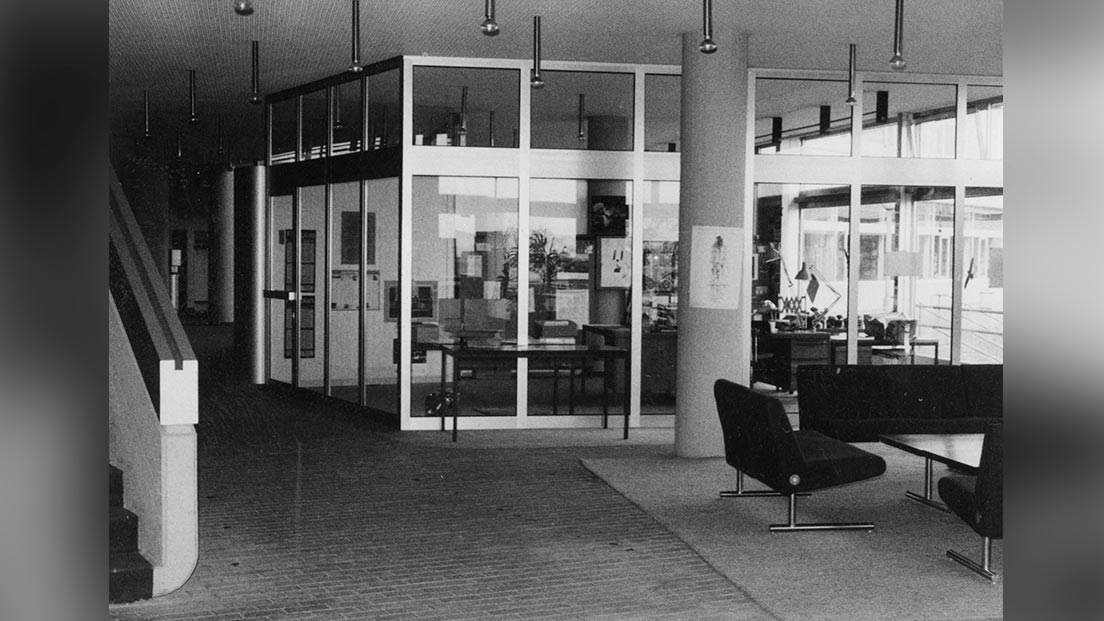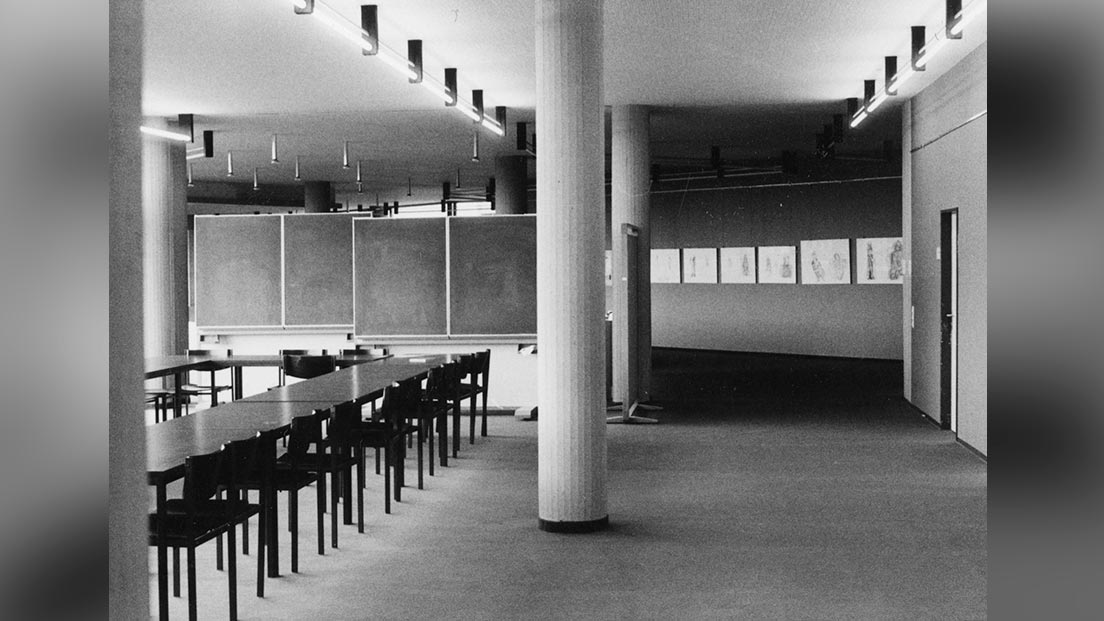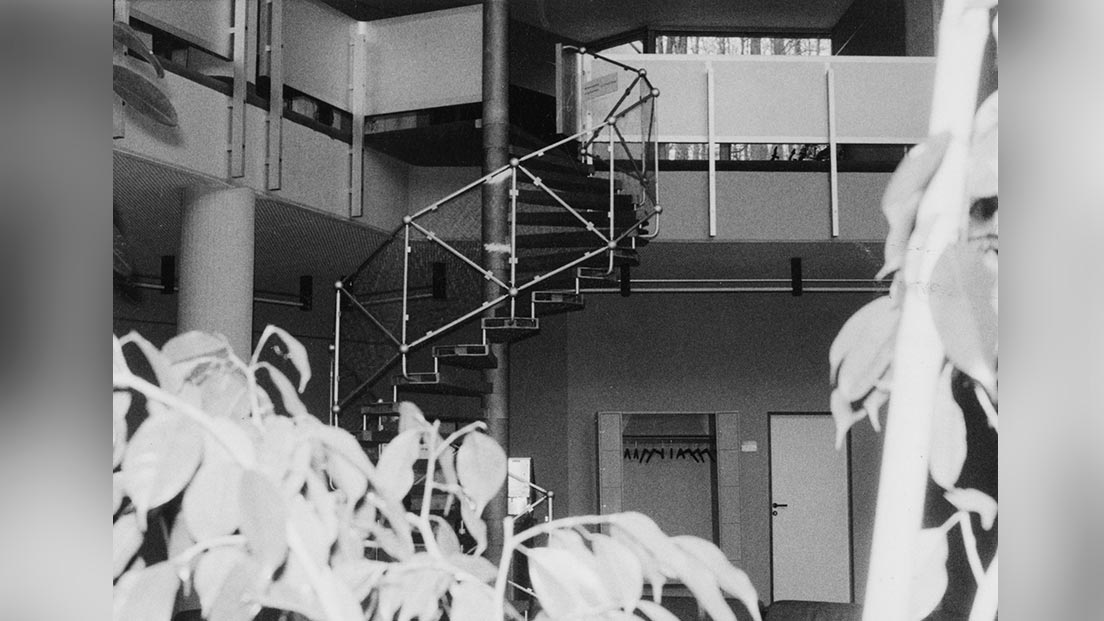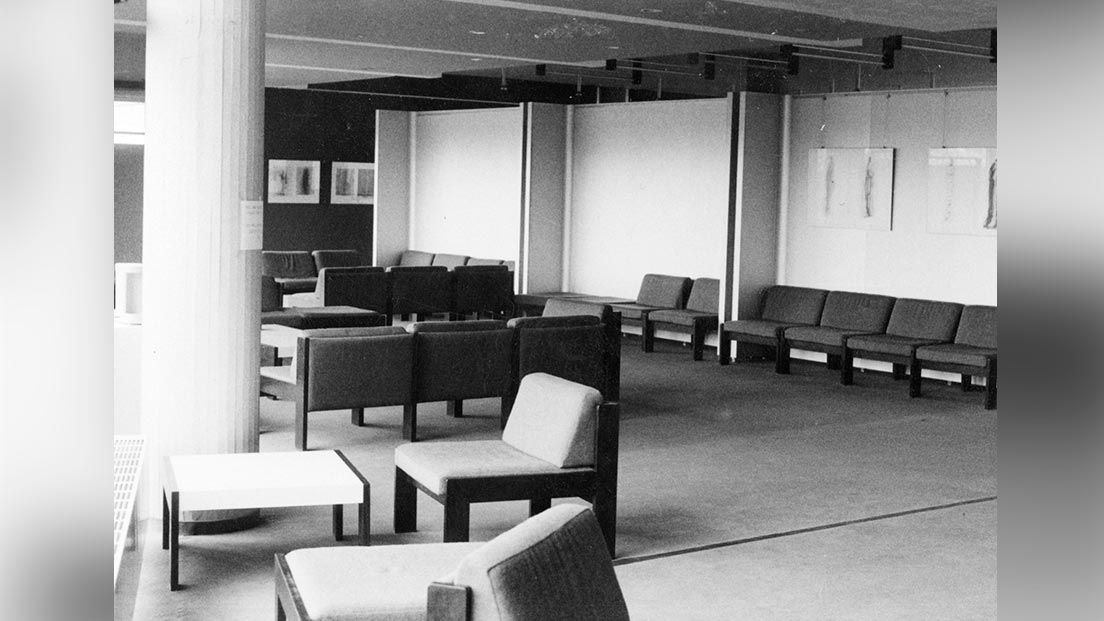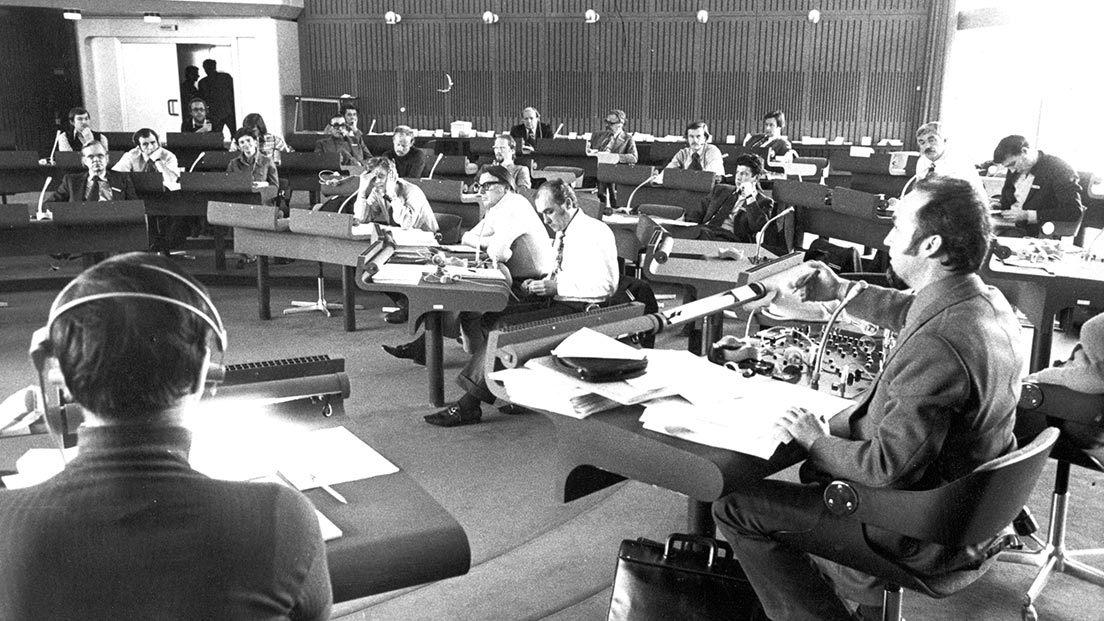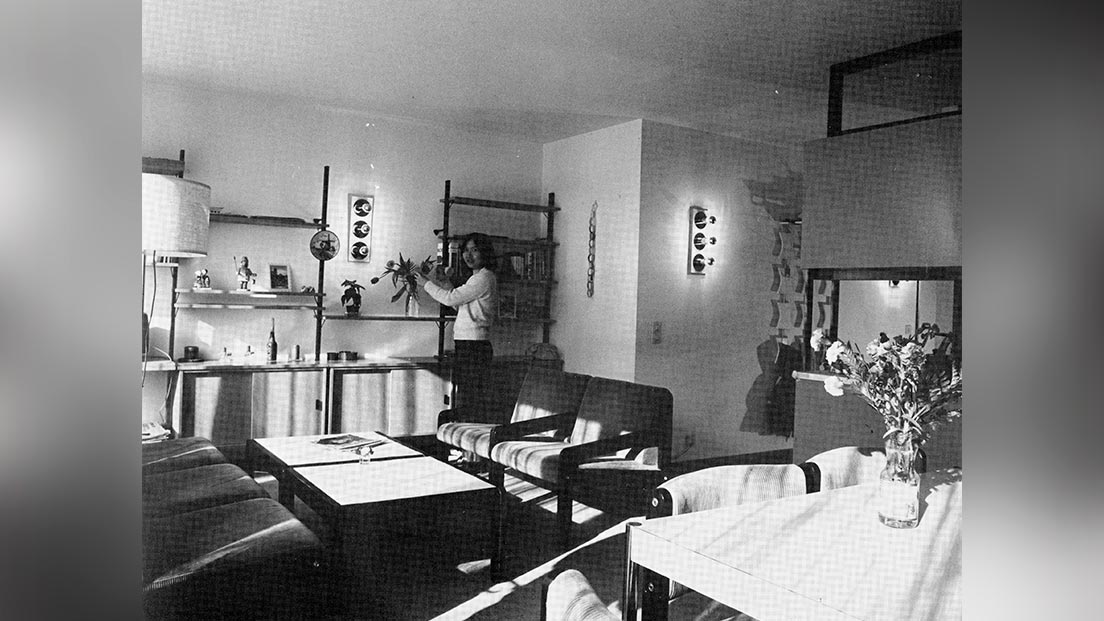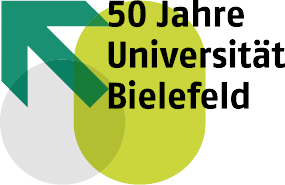–
Source: Universitätsarchiv Bielefeld, FS 21
When the ZiF moved from Rheda to its present building in October 1972, all you could see on the square of the main university building were thirty mighty towers – for the elevator shafts – jutting out of the ground. Zif’s head start was clearly apparent and also intended, as it enabled university employees to work in the ZiF apartments until the main university building was completed in 1976. In addition to several meeting rooms, offices for administration, canteen and the ZiF library, the new building on the Wellenberg also included over thirty apartments and a swimming pool for the fellows. The total construction cost about 15 million DM (equalling over 20 million Euro in today’s prices).
The first research group, which started at the ZiF in April 1973, was concerned with “New Mathematics” (set theory). This topic was deliberately chosen: In the 1970s, there was hardly a topic that caused more upset in German schools, since mathematics was to be taught as an exercise in abstract structures instead of traditional arithmetic lessons. Since this first group, whose members (who were called “Fellows” in keeping with Anglo-American research institutions) lived at the ZiF for the duration of the research group and collaborated on the topic, nothing has changed in the ZiF’s modus operandi. Then as now, the list of invited scholars is defined by the topic, and the interdisciplinarity is experienced and enhanced to a great extent by the proximity that common living creates. Since its inception, the ZiF has repeatedly tried to address socially relevant topics and to define and discuss them in an interdisciplinary manner.
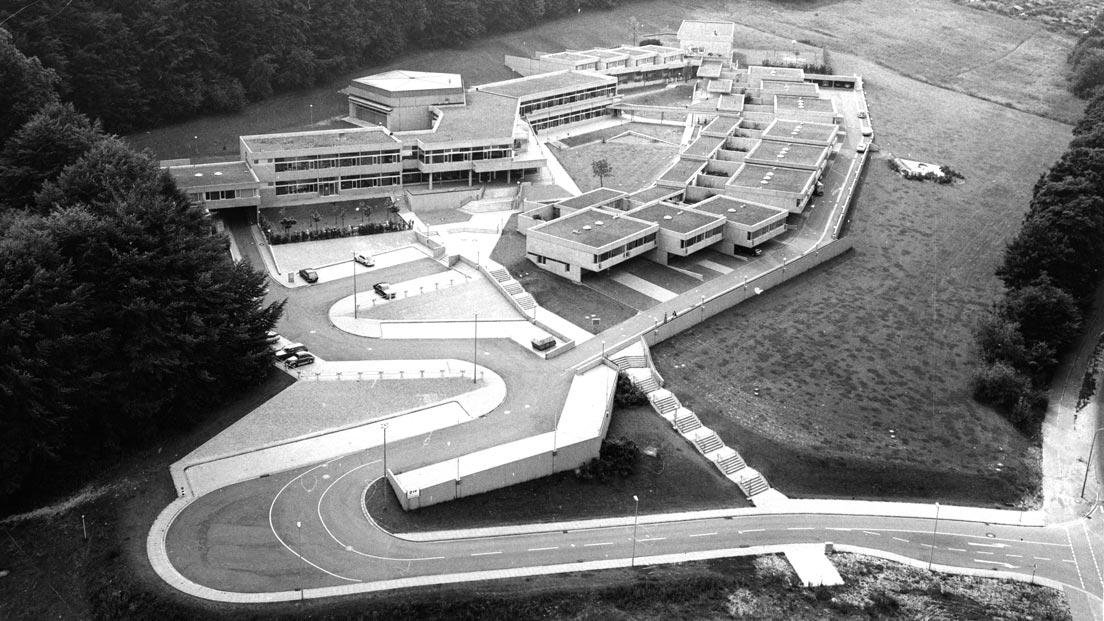
–
Photo: Günter Rudolf
Source: Universitätsarchiv Bielefeld, FOS 01862
In addition to the longer-term research groups, the ZiF hosts study groups with a duration of about four months as well as working groups that collaborate for about one week. The latter working method had already established itself in Rheda, where a total of 54 working groups had taken place before the move. Special highlights in the ZiF’s history were visits by researchers such as Elinor Ostrom and Norbert Elias or research groups on the theory of the welfare state, clinical linguistics, game theory or ethnic identity in the Americas. In addition, there have been regular contacts over the years with researchers seeking to establish similar centres (e.g. Stellenbosch in South Africa, Kyoto in Japan and Paris in France). Above all, they wanted to learn about the ZiF’s facilities and working methods in order to gather ideas for similar institutions they wished to establish in their own countries and cities.

